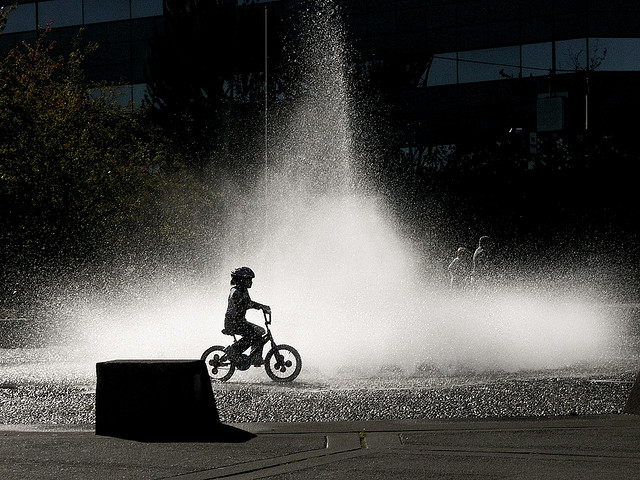If your impression of cities came entirely from watching the evening news, you might think that cities are saddled with ever-increasing traffic congestion and rising crime rates. From talking to your Great Aunt Ida at Thanksgiving, you’d think that New York was more dangerous for children than the suburbs and that Los Angeles was still covered in a cloud of smog.
But the truth is quite different. A look at the facts shows that cities are cleaner, safer, quicker, and healthier than ever.
Urban crime has fallen sharply over the past two decades, and many of the nation’s biggest cities, like New York, are statistically the safest.
And while the thought of raising kids in the city makes some parents quake with fear for the personal safety of their children, there’s growing evidence that city living is safer and healthier for kids than growing up in the suburbs. This week and next, I’ll be taking a look at some of the most common, and most mistaken views about cities.
Up first: Safety.
The Myth: Cities are dangerous places to live, especially for children
The Reality: Cities are actually quite safe while suburbs and rural areas are more dangerous
For decades, the common perception about cities is that they were dangerous, dirty, and crowded. A look at the facts tells a different story: our cities are cleaner, safer, quicker, and healthier than ever. Urban neighborhoods are some of the safest places to raise a family.
For an entire generation of Americans, safety and serenity meant living on a quiet, wide suburban street, where trips by car were a necessity to avoid the vulnerability of pedestrian travel.
Most of us still feel pretty safe getting into our cars, but traffic crashes are actually the leading cause of “non-intentional” death (i.e. not from disease) in the United States – and people who live in suburbs and rural areas are much more likely to die in car crashes. For those under 25, car crashes are the leading cause of death.
A University of Pennsylvania study looked at the geographic location of nearly 1.3 million injury deaths in the United States over two decades. It found that, on average, death rates from injuries were about 22 percent higher in the least dense counties than in the most dense counties.
Not surprisingly, there is a strong correlation between sprawling metropolitan areas, where people have to drive further on an everyday basis, and death rates from car crashes. Data from the National Highway Traffic Safety Administration’s Fatality Analysis Reporting System, shows that each additional mile driven per capita daily in a metropolitan area was associated with five additional car crash deaths per million in population. Comparing two metropolitan areas with populations of 2 million, a metro area where people drove 30 miles per person per day would be expected to have 100 more car crash fatalities annually than a metro area where people drove only 20 miles per person per day.
OK, so cities have fewer car crashes than the suburbs, but won’t we all die of lung cancer from all the smog? Next week, I’ll take on the myth that urban neighborhoods are choked by air pollution.
Photo courtesy of Wolfy (Pete) Hanson on Flickr
